Seven New Year's resolutions for designers in 2013
Growing and improving as a web designer is all about being honest with yourself. Oliver Reichenstein presents his unique take on the questions we should all be asking.
Drink less wine; eat less chocolate; stop smoking. No more ham. Exercise regularly. Call your mother every week. Listen more carefully. Respect other people. Don't make big promises unless you're sure that you will keep them. And, if you're a designer: work harder, work smarter, chose your clients carefully and charge them double.
These are all good resolutions, but if they're taken on 1 January, they're poison. We've all been there and … not done that. New Year's resolutions don't work. New Year’s resolutions are a moralist trap we jump into, and that lead to the same end: before the end of the first week we inevitably hit the ground of reality and wake up into our old weak self. New Year’s wishes are a worldly form of self-flagellation. Why do we start the New Year again and again with a boring guilt trip, when we know that it won't help anyone? What if the resolution itself is the reason why we fail? We have the funny trait that we do what we shouldn’t do with more motivation, pleasure and esprit than what we should (one of your resolutions might be to attend the best design events in 2013.
So, in order to trick ourselves, how about taking the resolution to not be a better person or designer, but a worse one. Like Jerry Seinfeld said to George Costanza: "If every instinct you have is wrong, then the opposite would have to be right."
How about trying to be a bad bad boy, bad bad girl, bad bad man, bad bad woman, a very very bad bad person? Will that get us a better start?
Obviously, we need to find good reasons to be bad. That is logically and rhetorically not as straightforward as finding good reasons to be good. So I hope that you’ll forgive me some logical and rhetorical tricks in the following five minutes of diabolical advocacy of the ultimate evil: a praise of the seven deadly sins.
01. Lust
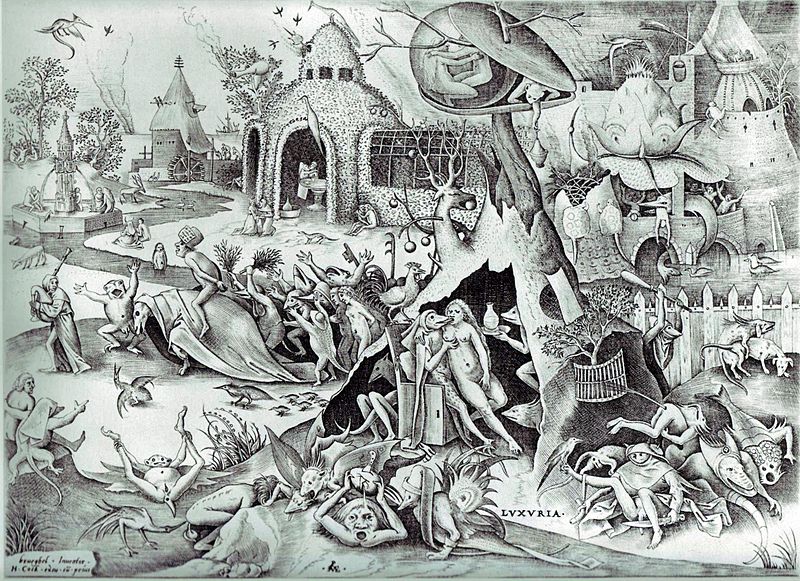
I can't see how one could design or write anything worthwhile if not driven by lust. We design out of lust – not out of desire or inclination, not out of boredom, professionalism, or duty. But lust. Lust for the beauty we lack. Because we're ugly. Ugly, nasty sinners, we designers are.
Sure. Designers solve problems and improve things. Some of the pleasure in our work comes from solving other people's problems and improving things. Sure. Cool. Right. There might be some perverted pleasure in solving other people's problems, but that's not what drives us.
Get the Creative Bloq Newsletter
Daily design news, reviews, how-tos and more, as picked by the editors.
We need to create beautiful things that we get excited about on a completely irrational, physical, yes, sexual level. We get excited by the most ugly and the most beautiful things equally. Why is that?
02. Gluttony
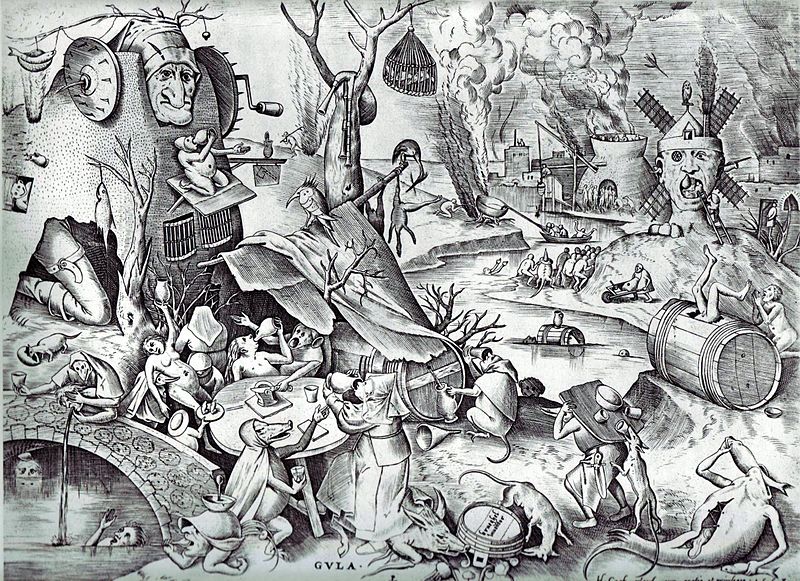
Designers have a gargantuan appetite. We devour more than we can digest. Having both too many delicacies and abhorrent foulnesses coming at us and occupying our sinful stream of consciousness. We consume good and bad design until we feel sick. We wish to, we want to and we have to. We have a good excuse for that. "In order to understand good design, we need to know bad design." That's what we tell ourselves. The truth is that we just have to put our hands and eyes on everything, or teeth and noses into everything, good or bad, because lust and gluttony is our way of life. If we encounter a particularly bad design, we examine it as closely as we examine a good design, we sniff it, we lick it, we chew on it and we digest it. We are disgusting. And we never get enough.
03. Greed
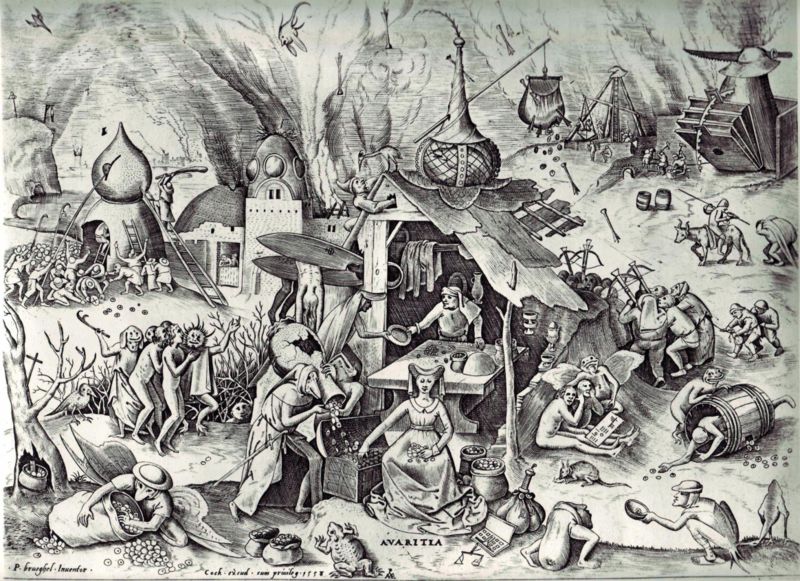
Greed makes you stupid and depressed. Greed is the will to touch, hear, see and own more and more and more, no matter what. Greed denies all limits. How could anyone advocate to be greedy? Watch me.
Designers are motivated by lust and gluttony. Both impulses boil down to one pathetic sentiment: greed. Greed drives us like nothing else. And like all evil people, we keep our greed in our dark hearts, well guarded, making sure that no one ever sees a trace of it.
That's why we always make sure, that, whenever greed starts growing inside us, we amplify it as much as possible. We tell ourselves: "Oh, hello, greed. Why are you so shy? Please grow more, grow as much as you can, now!" We tell ourselves to "feeeel the greed"; to give into the greed.
Why is that? Greed is repulsive. It looks bad and designers don't want to look bad. It has no limits, it has no shape, it has no form. Designers shape things. As a designer, being caught in shapelessness is fatal.
We feed our greed like we feed a fever. Greed is the fever, the complete emptiness of the dynamic that is needed to find form. What causes that fever?
04. Envy
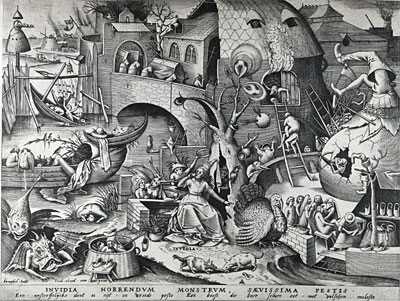
Envy is the pollen that fertilises our greed. Envy is the catalyst that grows greed into a gigantic tree of rotten logic. The rotten logic that tries to justify why you are allowed to claim possession over what you haven't earned.
The rotten tree of logic that tries to convince you that this other person doesn't deserve what they own. It is highly paralysing. The more envious you are, the less you get done. But, again, this is why we need to give into envy. Greed leads to envy, envy leads to sloth, and sloth …
05. Sloth
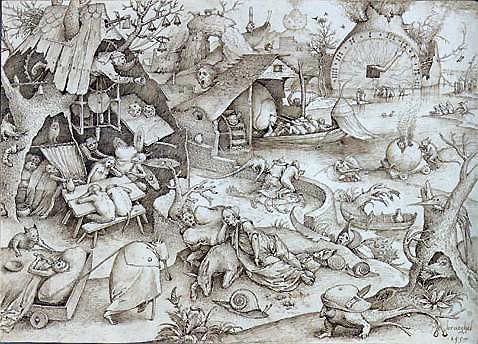
Sloth is the main talent of a good designer. Designers like to act stupid, do nothing and get paid for hanging around and pretending to work. The idea of doing nothing by doing stupid things is that there is no idea there. People that hunt for ideas, for feelings that they can put into shape don't need to do or think anything to find those ideas. There is no form without emptiness. To find complete emptiness you need to give into sloth.
Remember: great designers didn't get to where they are only through sloth. Designers need to excel at all seven deadly sins. The ultimate motivators to create something out of nothing is wrath.
06. Wrath
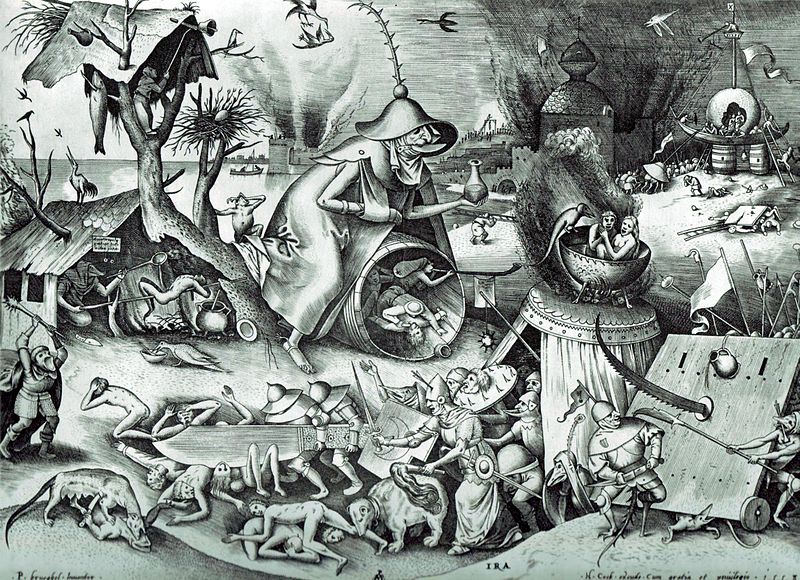
The idea, that great designers never get angry and never attack other designers is a preposterous, postmodern hippie idiocy. Fuck that. Average boring people must have come up with that notion. The idea that you can't be at once a great designer and be negative is a dumb self-congratulatory lie made up by insignificant moralist losers. The people that forbid us to swear and attack are the same that call us the worst names behind our backs. The idea, that you can't call a bullshitter a bullshitter, a liar a liar, an asshole an asshole is idiotically ideologically illogical: "Don't be negative" *is* being negative.
In every fight you pick, you will get hurt. Don't pick a fight if you're not ready to get hurt. Don't pick public fights with people that are clearly weaker than you. Will people hate you for picking fights? Some will, but some won't. Fights polarise. Fights between two evenly strong opponents are great to watch. Great minds don't agree. They fight. It's electrifying to see great minds going against each other.
But if you want to avoid being seen in the light of your own insults, don't throw those stones. Show your teeth in the most aggressive way. By making fun of people. This is way more efficient and aggressive than any strong worded attack. Say malarkey, not bullshit. Humour is the best armour to protect your own pride, the crown of the seven deadly sins.
07. Pride
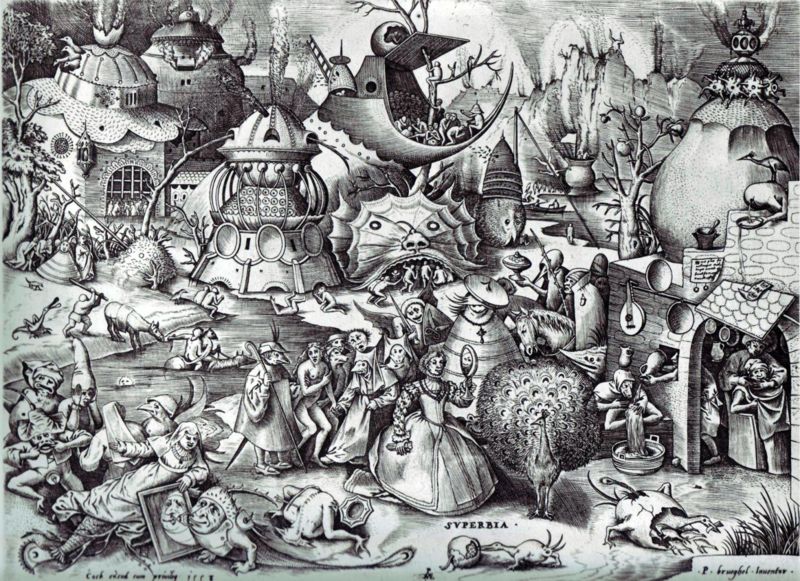
Be proud of what you have achieved. If you're only proud of that, you will be very easy to get around, because, usually, a single person has not achieved that much. Don't trick your pride with false modesty. Especially if you're young, modesty looks repulsive. Modesty looks good on people that have reached everything. To us regular people, plain pride is fine, just as a plain thank you sounds fine when you get a compliment.
If someone hurts your pride, don't fight them back. Only fight back if the adversary looks stronger than you and you know that you will win.
Small minds think that they will gain more from being silent and ignoring attacks than from engaging in public fights. If you don't want to lose, don't fight. If you want to win, fight. Why fight? You need something worth fighting for. What is worth fighting for? Bad bad things like good design.

Thank you for reading 5 articles this month* Join now for unlimited access
Enjoy your first month for just £1 / $1 / €1
*Read 5 free articles per month without a subscription

Join now for unlimited access
Try first month for just £1 / $1 / €1
The Creative Bloq team is made up of a group of design fans, and has changed and evolved since Creative Bloq began back in 2012. The current website team consists of eight full-time members of staff: Editor Georgia Coggan, Deputy Editor Rosie Hilder, Ecommerce Editor Beren Neale, Senior News Editor Daniel Piper, Editor, Digital Art and 3D Ian Dean, Tech Reviews Editor Erlingur Einarsson, Ecommerce Writer Beth Nicholls and Staff Writer Natalie Fear, as well as a roster of freelancers from around the world. The ImagineFX magazine team also pitch in, ensuring that content from leading digital art publication ImagineFX is represented on Creative Bloq.
